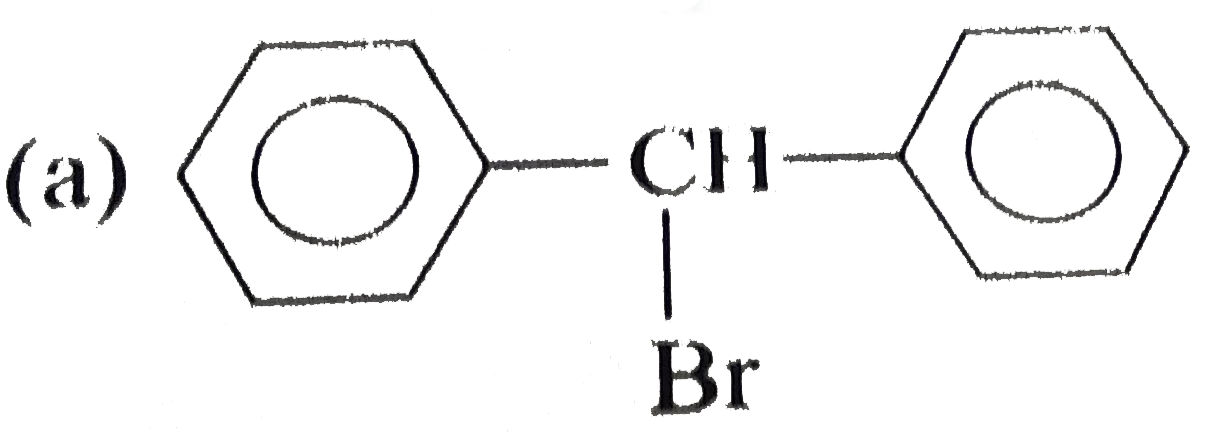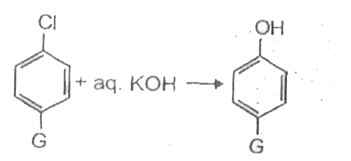SN2 reaction will be fastest in:
CH3Br
CH3Cl
CH3CH2Cl
(CH3)2CHCl
The correct Answer is:A
To determine which compound will undergo an SN2 reaction the fastest, we need to consider two main factors: steric hindrance and the quality of the leaving group. The SN2 mechanism involves a nucleophile attacking a carbon atom from the opposite side of the leaving group, leading to a transition state. Here's how we can analyze the options step by step:
Step 1: Understand the SN2 Mechanism
The SN2 reaction is characterized by a single concerted step where the nucleophile attacks the carbon atom while the leaving group departs. The reaction rate depends on:
- The steric hindrance around the carbon atom (less steric hindrance leads to faster reactions).
- The ability of the leaving group to depart (better leaving groups lead to faster reactions).
Step 2: Evaluate Steric Hindrance
- Methyl carbon (no alkyl groups attached) has the least steric hindrance.
- Primary carbon (one alkyl group attached) has moderate steric hindrance.
- Secondary carbon (two alkyl groups attached) has more steric hindrance.
- Tertiary carbon (three alkyl groups attached) has the most steric hindrance and does not undergo SN2 reactions effectively.
Step 3: Assess the Leaving Group
Common leaving groups in SN2 reactions include:
- Bromide (Br−)
- Chloride (Cl−)
- Iodide (I−)
Among these, bromide is generally a better leaving group than chloride due to its larger size and the stability of the bromide ion.
Step 4: Analyze the Given Options
Let’s analyze the options provided in the question:
1. Option A: Methyl halide (e.g., CH3Br)
2. Option B: Primary halide (e.g., CH3CH2Br)
3. Option C: Secondary halide (e.g., CH3CH(Br)CH2CH3)
4. Option D: Tertiary halide (e.g., (CH3)3CBr)
- Option A (Methyl halide) has no steric hindrance and a good leaving group (Br−).
- Option B (Primary halide) has low steric hindrance and a good leaving group (Br−).
- Option C (Secondary halide) has more steric hindrance and a good leaving group (Br−).
- Option D (Tertiary halide) has the highest steric hindrance and does not favor SN2.
Step 5: Conclusion
Based on the analysis, Option A (Methyl halide with Br−) will undergo the SN2 reaction the fastest due to minimal steric hindrance and the presence of a good leaving group.
Final Answer
The SN2 reaction will be fastest in Option A (Methyl halide with Br−).
---
The SN2 reaction is characterized by a single concerted step where the nucleophile attacks the carbon atom while the leaving group departs. The reaction rate depends on:
- The steric hindrance around the carbon atom (less steric hindrance leads to faster reactions).
- The ability of the leaving group to depart (better leaving groups lead to faster reactions).
- Methyl carbon (no alkyl groups attached) has the least steric hindrance.
- Primary carbon (one alkyl group attached) has moderate steric hindrance.
- Secondary carbon (two alkyl groups attached) has more steric hindrance.
- Tertiary carbon (three alkyl groups attached) has the most steric hindrance and does not undergo SN2 reactions effectively.
Common leaving groups in SN2 reactions include:
- Bromide (Br−)
- Chloride (Cl−)
- Iodide (I−)
Let’s analyze the options provided in the question:
2. Option B: Primary halide (e.g., CH3CH2Br)
3. Option C: Secondary halide (e.g., CH3CH(Br)CH2CH3)
4. Option D: Tertiary halide (e.g., (CH3)3CBr)
- Option B (Primary halide) has low steric hindrance and a good leaving group (Br−).
- Option C (Secondary halide) has more steric hindrance and a good leaving group (Br−).
- Option D (Tertiary halide) has the highest steric hindrance and does not favor SN2.
Based on the analysis, Option A (Methyl halide with Br−) will undergo the SN2 reaction the fastest due to minimal steric hindrance and the presence of a good leaving group.
The SN2 reaction will be fastest in Option A (Methyl halide with Br−).
Topper's Solved these Questions
- BOOK - MODERN PUBLICATIONCHAPTER - HALOALKANES AND HALOARENESEXERCISE - REVISION EXERCISE (Objective Questions) (Passage based questions)10videos
HALOALKANES AND HALOARENES
- BOOK - MODERN PUBLICATIONCHAPTER - HALOALKANES AND HALOARENESEXERCISE - REVISION EXERCISE (Objective Questions) (Assertion Reason questions)8videos
HALOALKANES AND HALOARENES
- BOOK - MODERN PUBLICATIONCHAPTER - HALOALKANES AND HALOARENESEXERCISE - MEMORY TEST (C. Choose the correct alternative)12videos
HALOALKANES AND HALOARENES
- BOOK - MODERN PUBLICATIONCHAPTER - GENERAL PRINCIPLES AND PROCESSES OF ISOLATION OF ELEMENTSEXERCISE - COMPETION FILE (Integer Type Numerical Value Type Questions)5videos
GENERAL PRINCIPLES AND PROCESSES OF ISOLATION OF ELEMENTS
- BOOK - MODERN PUBLICATIONCHAPTER - ORGANIC COMPOUNDS CONTAINING NITROGEN EXERCISE - UNIT PRACTICE TEST5videos
ORGANIC COMPOUNDS CONTAINING NITROGEN
Similar Questions
Knowledge Check
- Question 1 - Select One
SN1 reaction is fastest in
ACH3CH2BrBCH3−CH∣Cl−CH3CCH3−CH3C∣∣CH3−ClDCH3−CH∣CH2∣CH3−Cl - Question 2 - Select One
The rate of SN1 reaction is fastest with :
A B
B C
C D
D
- Question 3 - Select One
SN2 reaction leads to
Ainversion of configurationBretention of configurationCpartial racemisationDno racemisation
The rate of S1N reaction is fastest in the hydrolysis of which of the following halides?
View SolutionSN2 reaction are
View SolutionThe reaction

is fastest when X isView SolutionFor the reaction
S2O2−3(aq)+2H3O+(aq)⇔S(s)+H2SO3(aq)+H2O(l)
Rate =k[H3O+][S2O2−3]
Reaction is fastest inView SolutionThe reaction,

is fastest when X is :View Solution


